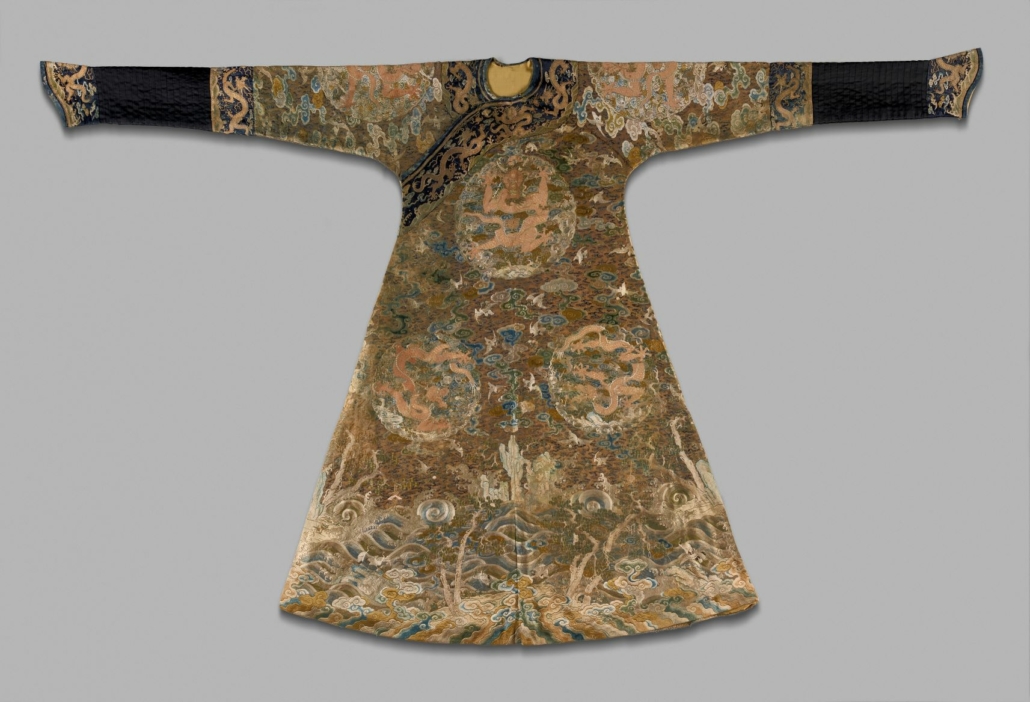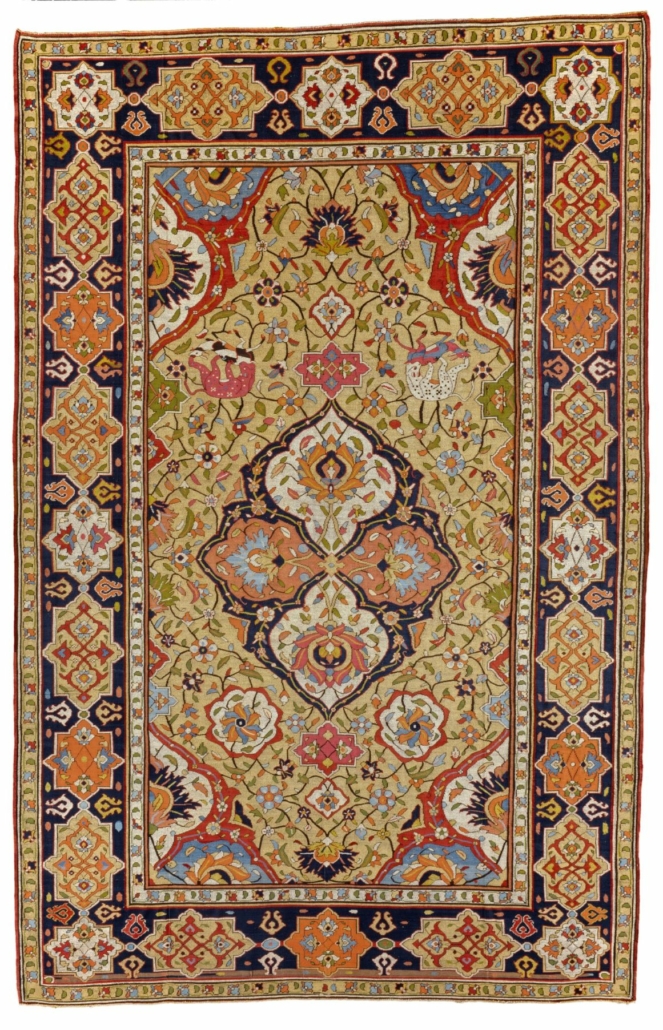
KANSAS CITY, Mo. – For the first time in decades, The Nelson-Atkins Museum of Art in Kansas City will display precious, rarely seen Chinese, Indian, Japanese, Persian, and Turkish costumes and textiles. Weaving Splendor: Treasures of Asian Textiles opens September 25 and runs through March 6, 2022. Made with fine materials, exemplary techniques, and artistry, Asian luxury textiles were treasured locally and were central to global trade. The sumptuous textiles in this exhibition conveyed the identities, status, and taste of both local and international patrons and consumers.
“For centuries, Chinese textile artists produced the most refined silk textiles utilizing luxury materials and techniques to make the garments not only functional but also appreciated as artwork,” said Ling-en Lu, Curator of Chinese Art and a curator of the show. “One example is the picturesque embroidery of the One Hundred Cranes Robe, which came from the Qing dynasty imperial tomb of Prince Guo (1697– 1738). This rare garment is widely considered to be one of the most important Chinese textiles in the United States.”
Prince Guo was buried with this robe and many other textiles for his afterlife. Artists enhanced the formal style of the dragon robe with dense, complex embroidery. They achieved the detail of a painting, covering the silk damask fabric with dragons, pine trees, waves, cranes, and peaches. These images that carried positive meanings would have blessed the Prince.

The exhibition will share in-depth histories on a number of works. The Tapestry Woven Medallion Carpet, created in Iran around 1600, has an illustrious and international history, both through its materials, which include dyes sourced in the New World, and through its provenance, as a gift from the ruler Shah ‘Abbas I to the Pope in Rome, and then to a cardinal and his family before its sale to the Nelson-Atkins in 1932. Its color is nearly as vibrant today as the day it was woven.

The exhibition will also spotlight local fascination with Asian textiles. In the late 1800s, affluent Americans like Kansas City’s Jacob and Ella Loose boarded steamships and set sail for Asia. There they explored firsthand cultures and lands largely understood in the United States through published accounts, and as most tourists do, they shopped. Luxurious tapestries and wall hangings, like those produced in Japan and later donated by the Looses, were easy to pack for safe travel home. European and American collectors like the Looses purchased these large and impressive textiles to decorate their mansions.
Visit the website of the Nelson-Atkins Museum of Art and see its dedicated page for Weaving Splendor: Treasures of Asian Textiles.


